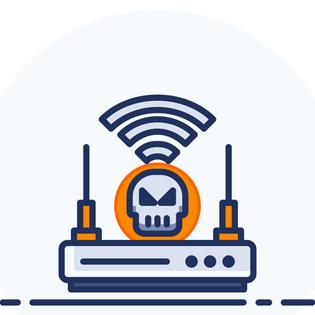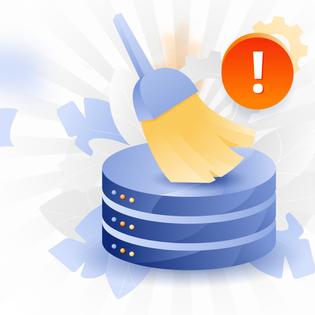Advertiser Disclosure
All About Cookies is an independent, advertising-supported website. Some of the offers that appear on this site are from third-party advertisers from which All About Cookies receives compensation. This compensation may impact how and where products appear on this site (including, for example, the order in which they appear).
All About Cookies does not include all financial or credit offers that might be available to consumers nor do we include all companies or all available products. Information is accurate as of the publishing date and has not been provided or endorsed by the advertiser.
Editorial Policy
The All About Cookies editorial team strives to provide accurate, in-depth information and reviews to help you, our reader, make online privacy decisions with confidence. Here's what you can expect from us:
- All About Cookies makes money when you click the links on our site to some of the products and offers that we mention. These partnerships do not influence our opinions or recommendations. Read more about how we make money.
- Partners are not able to review or request changes to our content except for compliance reasons.
- We aim to make sure everything on our site is up-to-date and accurate as of the publishing date, but we cannot guarantee we haven't missed something. It's your responsibility to double-check all information before making any decision. If you spot something that looks wrong, please let us know.
If you haven’t given any thought to whitelisting, we’re here to show you why you should. Whitelisting gives exclusive access to specific IP addresses, applications, websites, and email. Application whitelisting is a customization process to bypass security systems while blocking those items that aren’t on the list. You can think of it as having reservations at your favorite restaurant.
If you aren’t familiar with how whitelisting works, we’ll take you through the process and show you how easy it is to streamline your online data security.
Whitelists vs. blacklists
Benefits of whitelisting
Disadvantages of whitelists
How to implement a whitelist
Whitelisting best practices
Whitelisting FAQ
Bottom line
What is whitelisting?
A whitelist is a cybersecurity strategy that allows access or preference to only approved apps, IP addresses, or email addresses.
Whitelisting can prevent malware, malicious code, ransomware, and block hackers. When you customize your list, it will prioritize emails and give access to specific websites and verified applications. There are email, IP, and application whitelists that increase productivity and security.
- IP whitelists allow remote network access to approved IPs.
- Application whitelists prevent unverified apps from accessing your device.
- Email whitelisting allows the most crucial emails to appear at the top of your inbox while blocking phishing attempts.
It may take some work to set up whitelisting, so if you’re not up for the task, you may not want to implement this protocol. Yet, it can make things much easier in the future by giving you security solutions that are easy to maintain.
Whitelists vs. blacklists
While whitelisting helps control access to the websites, applications, and emails you want most, blacklisting works differently. Blacklisting allows access to any website or email resource as long as it’s not deemed a security threat. That means all online traffic is allowed to flow through to your device, but specific files and applications that are considered risky can be disallowed.
Both whitelisting and blacklisting have advantages because they help protect your online presence and your device from vulnerabilities. In a sense, both of these measures are like security guards standing at the entrance, keeping dangerous invaders at bay. One holds the list of who gets in, while the other has the names of those who can’t enter the premises.
Benefits of whitelisting
You may think you have the best antivirus software and don’t need to waste your time setting up a whitelist. Unfortunately, in the world of cybersecurity, that may not always be enough. In the work setting, it’s good to have these lists to add more data security and improve workflow. Whitelisting may be more secure than your antivirus or anti-malware software because it nails down exact website addresses that aren’t safe to use.
While whitelisting may not be your first line of defense for data safety, it certainly has a place. That is especially true when you use email or a virtual private network (VPN), which helps block online traffic. The trusted sites combined with the security a VPN offers will enhance your online safety.
Whitelisting is typically more prevalent in business settings, but that doesn’t mean individual users can’t use it. If you work remotely, you may want to block access to websites that you know could be malicious. Many companies also use this process to keep employees from accessing unauthorized websites.
Disadvantages of whitelists
Whitelists take some work on the front end. It’s a manual process where you add a website address to your list or you install a third-party software and must maintain it from that point forward.
If you have a dynamic IP address that changes constantly, it can be tough, if not impossible, to maintain an appropriate IP whitelist. That leads to a tricky situation with employees who work from home.
The whitelists need to be reviewed regularly to remove anything that’s no longer relevant. So the IT department at work or you at home will have to make the time to do this routinely.
You should know a whitelist isn’t foolproof. As with anything else in the cybersecurity world, things may fall through the cracks. No security protocol is one hundred percent safe at all times. If you implement whitelisting, it should only be used in conjunction with other security measures, like firewalls and antivirus software.
At times, whitelisted files and websites may still be blocked by an antivirus. That requires a time-consuming workaround. The antivirus software will sometimes relay false positives.
How to implement a whitelist
IT departments typically handle the implementation of whitelisting solutions in an organization. It may vary depending on the type of whitelist software involved. Sometimes users may get asked for specific examples of websites or contacts needed. We will give you some examples of who sets up these lists.
Email whitelists
For businesses, IT companies have system administrators that can build email contact lists that are considered safe. Sometimes applications are available that can do this quickly and these can be deployed on multiple devices across the network at once. That makes for a more efficient process.
IP whitelists
Network administrators may handle IP whitelisting with the help of a software application. Certain lists can be set up that contain allowed IP addresses. IT teams may work with vendors who specialize in cybersecurity and combine this with organization-specific applications to generate a whitelist.
Application whitelists
Application whitelists may also use a vendor-assisted approach. This protocol will use characteristics of known trusted applications and company-generated lists of applications that are used in-house, and digital signatures.
Whitelisting best practices
When using whitelisting, some best practices should be followed for the most accurate results. These lists are only as good as they are current. Here are some of the most important whitelisting generation rules to remember.
- Keep the whitelist updated: The list is like antivirus software, as it needs regular updating to allow safe websites and applications to come through.
- Plan for deployment: To stop any threats from coming through, you must first know what those are. The first step is to analyze the host environment and develop a centralized approach.
- Keep precise documentation: Documentation is needed for maintaining cost considerations and an accurate record of the process.
- Test before initiation: Before the whitelist is initiated, it should be tested in a test environment for accuracy and to check any issues ahead of deployment.
Whitelisting FAQ
Is whitelisting a replacement for antivirus software?
Whitelisting should not be used as a replacement for antivirus software. It can be an additional security layer to your current antivirus program, but you need antivirus for security protection.
What is an allowlist?
An allowlist contains the good applications that the whitelist deems appropriate for access. Application allowlists are required by the National Institute of Standards and Technology (NIST).
Is it better to whitelist or blacklist?
Whitelisting and blacklisting are both used to control website access. Whitelisting contains the approved websites, and blacklists contain the websites that are not authorized. One is not necessarily better than the other, as they are two methodologies working for the same result.
Bottom line
The purpose of whitelisting is to secure a network or your personal device by identifying trusted websites before you access them. Whitelisting can be challenging because it sometimes requires software that helps set up the parameters. Many individual users don’t enforce whitelists as frequently as companies with IT departments.
If you want to use whitelisting, don’t neglect having an antivirus to scan for malware and ransomware. A strong antivirus program is your first line of defense against cyberattacks, no matter what else you have in place. Whitelisting is an addition to security that may improve your workflow and increase productivity. If you feel you need extra measures to prevent access to malicious websites, whitelisting is a safe way to provide that layer of protection.
-
All-in-one protection for your personal info and privacy
-
Excellent antivirus protection
-
Additional features like a file shredder and parental controls
-
Multiple pop-ups for text notifications can be annoying





